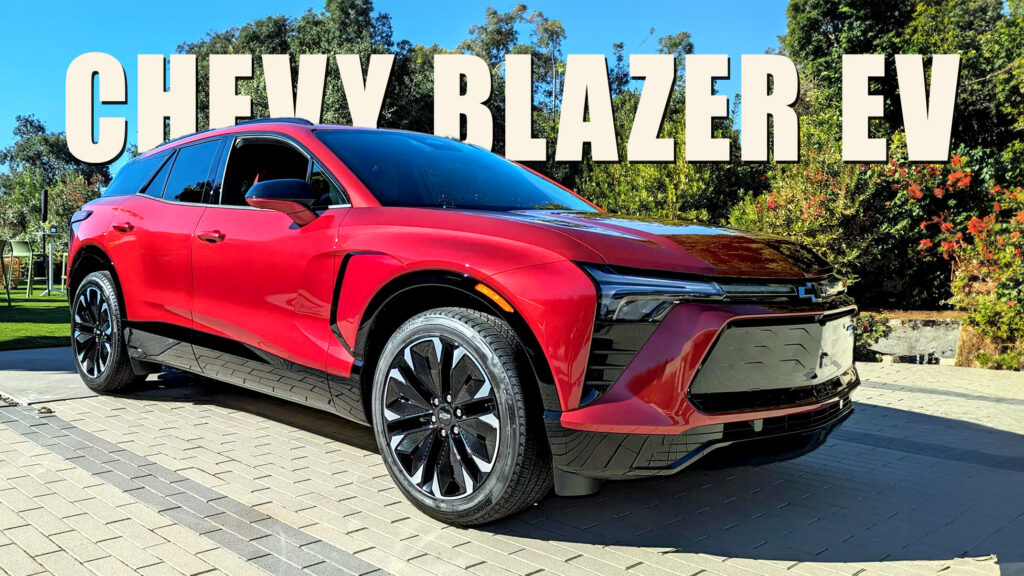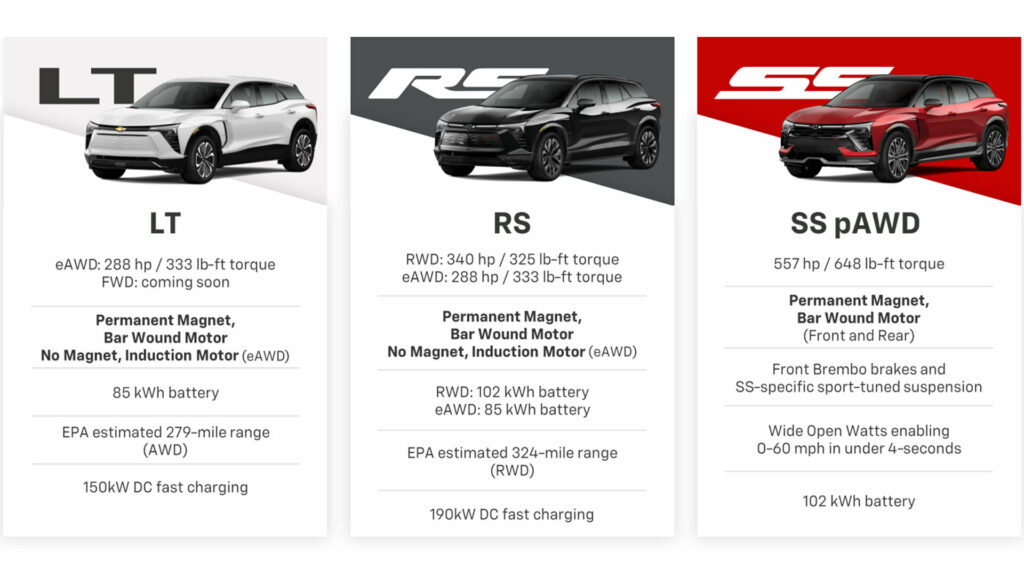With two batteries and three drive types, there’s a Blazer EV for virtually everyone
2 hours ago
 –>
–> 
–>
We recently took a spin in the 2024 Chevrolet Blazer EV and it’s worth taking a more extensive look at its powertrain lineup, which offers something for everyone.
Kicking things off is the entry-level LT trim, which features an 85 kWh battery pack as well as a choice between front- or all-wheel drive. Chevrolet isn’t saying much about the former at this point, other than it’s coming soon, but the latter has a dual-motor all-wheel drive system with a combined output of 288 hp (215 kW / 292 PS) and 333 lb-ft (451 Nm) of torque.
The mid-level Blazer EV RS can be equipped with the same battery and all-wheel drive system, or with a rear-mounted motor producing 340 hp (254 kW / 345 PS) and 325 lb-ft (440 Nm) of torque. The motor is shared with the Cadillac Lyriq and it’s accompanied by a larger 102 kWh battery pack, which helps to increase the range from 279 miles (449 km) to 324 miles (521 km).
advertisement scroll to continue
Review: The 2024 Chevy Blazer EV Tries To Please Everyone And Largely Succeeds

The bigger battery has a 190 kW DC fast-charging capability and this enables the rear-wheel drive crossover to get approximately 78 miles (126 km) of range in ten minutes. The 85 kWh battery maxes out at 150 kW and this means it only gets around 69 miles (111 km) of range in the same time.
Since most charging occurs at home, buyers will be happy to find a standard Dual Level Charge Cord with swappable ends that allow for Level 1 (120V) and Level 2 (240V) charging. The cord maxes out at 7.7 kW, but customers can get a dedicated charging station to deliver the maximum AC charge of 11.5 kW. The company hasn’t gone into many specifics about Level 2 charging, but has previously said the model can get up to 24 miles (39 km) of range per hour and that could potentially increase with the optional charging station.
On the topic of charging, long trips shouldn’t be too stressful as the navigation system has optimized route planning that takes charging into consideration and will even tell you how long to recharge at each station. The system will also pre-condition the battery, so it’s ready when you arrive at the fast charger.
Getting back to the powertrain, officials told us that offering front-, rear-, and all-wheel drive enables them to have multiple price, performance, and range points that will appeal to various consumers. It also allows them to pitch rear- and all-wheel drive variants to customers in warmer climates, while steering those in colder areas to models with front- and all-wheel drive.
Michael Gauthier / CarScoops
Interestingly, the rear-wheel drive and all-wheel drive Blazer use two entirely different rear electric motors. The all-wheel drive model has a small and compact motor out back, while the rear-wheel drive variant has a larger and more powerful unit.
While this would seemingly add cost and complexity, using different motors results in significant cost savings and that’s amplified when they’re shared with other vehicles. The Ultium platform has also been designed with modularity in mind, so it’s relatively easy to swap in or out different motors.
This helps to explain why one model can offer two batteries, three drive types, and an assortment of electric motors. There’s even more options on the horizon as the SS variant is slated to arrive in the spring of 2024. It’s slated to have 557 hp (415 kW / 565 PS) and 648 lb-ft (878 Nm) of torque, which will allow for a 0-60 mph (0-96 km/h) time of less than four seconds when using Wide Open Watts (WOW) mode.
